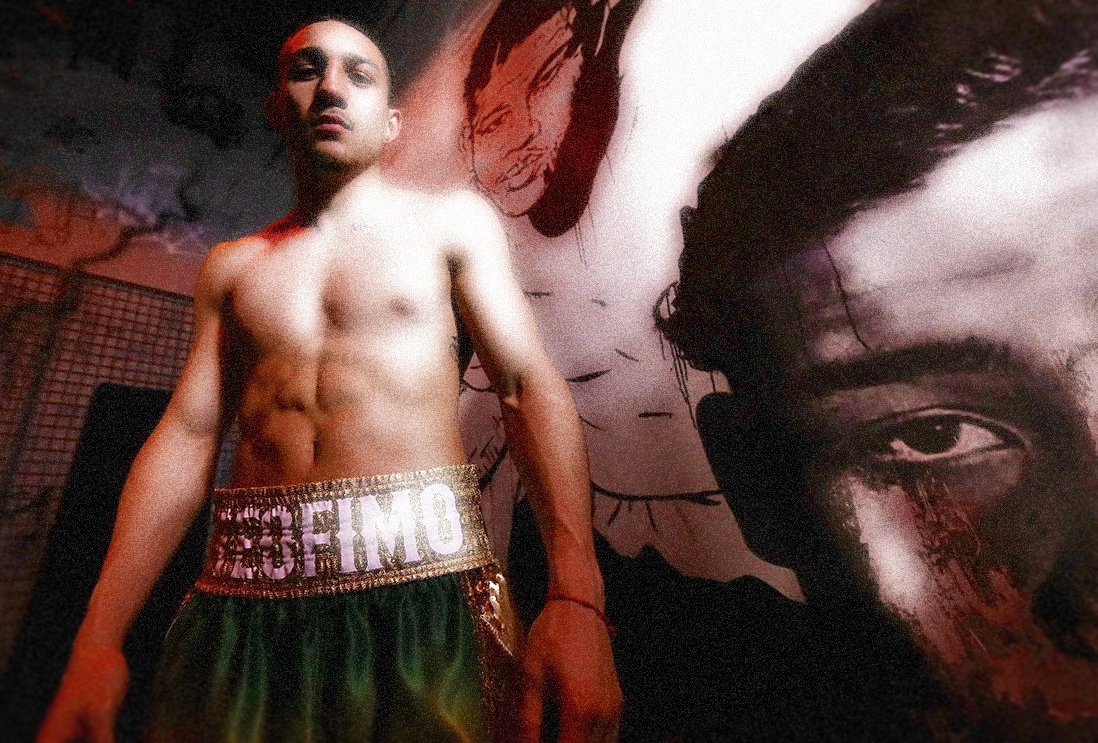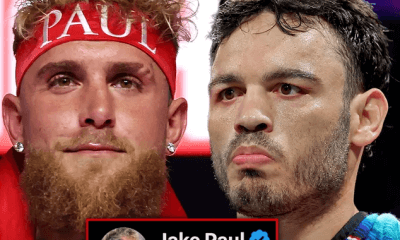Featured Articles
“—C’mon!” (from the pen of Springs Toledo)

“—C’mon!” said Teofimo Lopez with two seconds left in the 12th round. It was a Brooklyn thing to say on a Brooklyn-type Saturday night, and Lopez timed it well. He’d just crashed two hooks at either side of Vasiliy Lomachenko’s head and ended their saga as it began—with sharp words.
“My son will destroy Lomachenko,” Lopez’s father told EsNews in August 2017. Three months later Lopez was in the gym mimicking his style. “Same side always,” he said as he tapped the bag and dipped to his right. “Nuthin’ different.” “Lomachenko is a diva,” he said last week. “I don’t like him … I’m the type of person, I say something I mean it. If you have a problem with it, come see me.” Lomachenko came to see him all right, and both brought their fathers as if the whole thing was a schoolyard scrap.
Lomachenko’s father is a silent sage. His modern training techniques are part of the “performance revolution” that has transformed every sport, including the sport that’s barely a sport, and not necessarily for the better. Papa Chenko’s futurama theories seem at once scientific and idiosyncratic. Pundits who never heard of Freddie Brown think they’re next-level stuff. There’s Lomachenko holding his breath under water to build lung strength; there he is touching that board with blinking lights to improve hand-eye coordination. When Lomachenko was 9, his father went so far as to enroll him in a Ukrainian folk dance school to expose him to hobak, hutsulka, and the kolomiyka, and you can see it in all the hopping and side-stepping he does around the ring at 32.
Papa Lopez is anything but silent, though he too is a sage—a naysaying sage with street instincts picked up during a few round trips through hell. He takes no one’s word for anything and if he takes a break from a tirade and asks a question, it has about as much tact as a shiv. When Lomachenko is holding his breath in the pool is someone else there too, denting his rib cage with hooks? Those lights blinking on the screen, do they feint? And dancing school? Dancing school? Brooklyn itself rolls its collective eyes.
Papa Lopez laughs without mirth at the consensus opinion, at the so-called experts. But he couldn’t laugh off the indisputable fact that Lomachenko has been knocking off a parade of world-class fighters. So he plopped down in front of YouTube to see for himself what was happening.
And what did he see?
He saw that the so-called Matrix style is a series of tricks; that Lomachenko is pulling fast ones on the gullible in the opposite corner and in press row. He saw opponents cooperating with him as he gauged their strengths and weaknesses in the first round or two and measured the distance between his glove and their chin. He saw them mesmerized by nothing-shots—“pitty pats,” he called them, “patty-cakes,” and wondered if it would have been easier or harder, given the language barrier, if Lomachenko just came out and asked them to throw something so he can find the best route around it to sock them in the chops.
Papa Lopez also saw that Lomachenko is preoccupied with not getting hurt; that he habitually slips, dips, and veers off to his right against the conventional stance. Teofimo, 23, saw the same thing. They both know why he prefers that direction: it’s the safest route.
His offense, which has two prongs and lots of frills, doesn’t contradict his preoccupation. Lomachenko wants to draw out his opponents to counter them. He stands a half-step off the perimeter where they can’t quite reach him and he can’t reach them. Then he baits them. If they take the bait, he hops in with a jab and then hops back out of reach. He’s making calculations, looking for patterns, and once he finds them he exploits them with minimal risk to himself because, like Floyd Mayweather, he already has a pretty good idea of what they’re going to throw. When is he most aggressive? When his opponent is least aggressive—out of position or covering up. He isn’t comfortable with uncalculated risks. Like Floyd, he wants control; and that only happens with an opponent’s cooperation.
Stanley Crouch, the late cultural critic and Brooklynite who was at least as contentious as Papa Lopez, understood the set-up. “What a boxer ideally wants to do is turn the opponent into an assistant in his own ass-whipping,” he said. “That’s really what you want the other guy to do—to assist you in whipping his ass.”
Lomachenko built a reputation on willing assistants.
And defeating him was easier than anyone anticipated. The fighter of the future bowed to all-American unruliness and old-fashioned fundamentals.
Old School’s comeback Saturday night was long, long overdue. Lopez used his strength and length to draw an invisible border with a warning that said “this far and no farther.” Then he enforced it. Instead of letting Lomachenko freely angle around him like he’s some stiff at the prom, he angled with him and threw punches. When Lomachenko slipped and sallied past his invisible border, he adjusted his distance and sent the dogs out. He stopped his momentum. He never let him take control. He never cooperated.
By the 8th round, Lomachenko realized that he had no chance to win unless he let go of his preoccupation with defense. He had to “sell out,” as Andre Ward said, by getting closer and sallying in when it wasn’t safe. Lomachenko won the 8th round—the first of only three that two judges scored his way—but it didn’t matter. His mouth had dropped open as if he was getting ready to admit futurama’s failure. “I heard him huffing and puffing and I knew I had him,” said Lopez.
The 12th round reminds us that Old School remains the gold standard in the sport that’s barely a sport. When Papa Lopez had a nervous moment in the corner and urged caution, Lopez refused. “I’m a fighter, I can’t give him that,” he said, as if to remind us that Old School is more than dust, that it’s a disposition.
Teofimo Lopez now stands in a succession of lightweight kings whose dispositions were the impetus behind achievements that make this succession very possibly the most majestic of them all: Joe Gans. Benny Leonard. Tony Canzoneri. Barney Ross. Henry Armstrong. Ike Williams. Carlos Ortiz. Roberto Duran. Julio Cesar Chavez. Pernell Whitaker.
Floyd Mayweather is in that succession too, but the business model that guided his career was rebuked Saturday night. Lopez pointed to the past, polished it up, and declared its superiority. “We’re bringing back what the Old School was. You fight the best and push on it. I’m not here to pick and choose who I want to fight because I want to defend my title and keep that 0,” he said and shook his head. “No. Nah!”
The lightweight king now beckons chief rivals Devin Haney, Ryan Garcia, and Gervonta Davis to disavow the business model and take up the red flag. He looks north to Josh Taylor and Jose Carlos Ramirez’s battle for the jr. welterweight crown and beckons either of them—or both.
“—C’mon!”
Photo credit: Mikey Williams / Top Rank
Check out more boxing news on video at the Boxing Channel
To comment on this story in the Fight Forum CLICK HERE
-

 Featured Articles4 weeks ago
Featured Articles4 weeks agoAvila Perspective, Chap. 330: Matchroom in New York plus the Latest on Canelo-Crawford
-

 Featured Articles3 weeks ago
Featured Articles3 weeks agoVito Mielnicki Jr Whitewashes Kamil Gardzielik Before the Home Folks in Newark
-

 Featured Articles17 hours ago
Featured Articles17 hours agoResults and Recaps from New York Where Taylor Edged Serrano Once Again
-

 Featured Articles4 weeks ago
Featured Articles4 weeks agoCatching Up with Clay Moyle Who Talks About His Massive Collection of Boxing Books
-

 Featured Articles5 days ago
Featured Articles5 days agoFrom a Sympathetic Figure to a Pariah: The Travails of Julio Cesar Chavez Jr
-

 Featured Articles3 weeks ago
Featured Articles3 weeks agoMore Medals for Hawaii’s Patricio Family at the USA Boxing Summer Festival
-

 Featured Articles7 days ago
Featured Articles7 days agoCatterall vs Eubank Ends Prematurely; Catterall Wins a Technical Decision
-

 Featured Articles4 weeks ago
Featured Articles4 weeks agoRichardson Hitchins Batters and Stops George Kambosos at Madison Square Garden




















